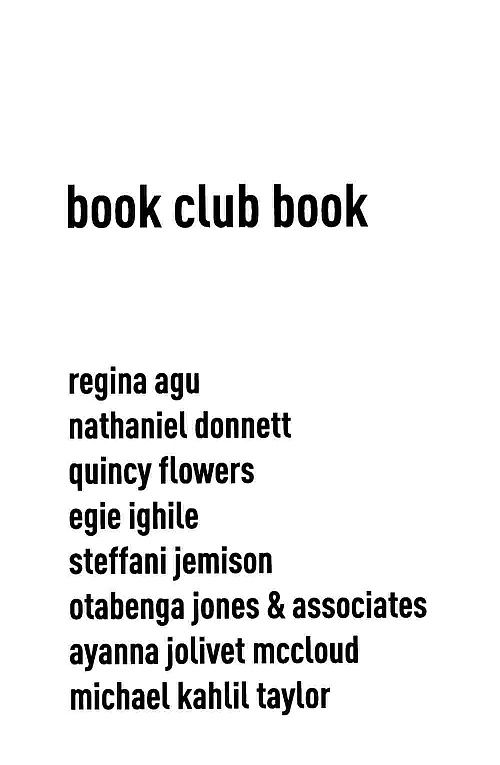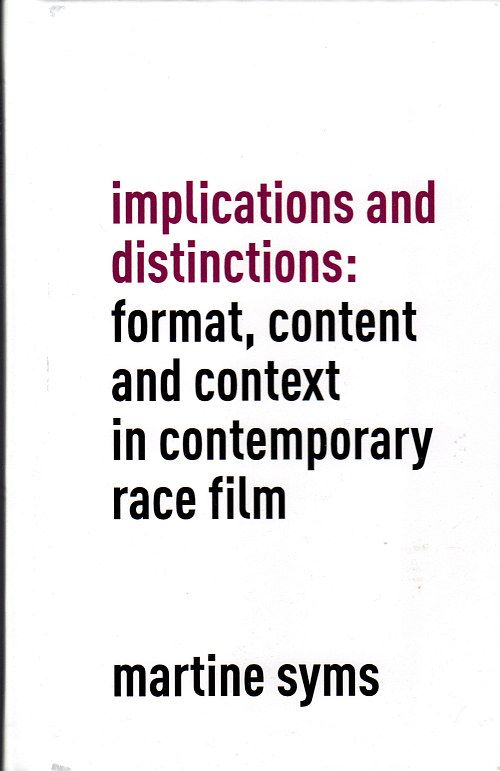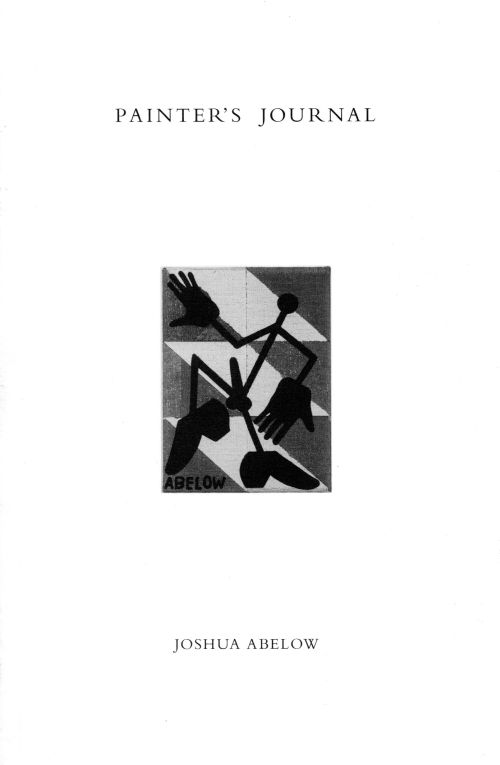
Art Schooled: A Year Among Prodigies, Rebels, and Visionaries at a World-Class Art College by Larry Witham. This is a mostly journalistic account of the operations of MICA (Maryland Institute College of Art--Jeff Koons alma mater!) in Baltimore. It's an elite art school, and it is interesting to read how a school like this operates. But Witham doesn't analyze too deeply. He doesn't offer conclusions about what works and doesn't at a school like this, much less offer any thoughts on the efficacy of teaching art or the place of schools like MICA in the evolving ecology of the art world. That said, the data (his reporting) is there--a reader familiar with the art world can draw her own conclusions.

Book Club Book edited by Steffani Jemison. This book is a collection by participants in a Project Row Houses-hosted book club. One can forgive a micro-press book for lapses in editing, but I wish this book felt less like random sweepings of whatever the authors had available. This lack of an editorial hand is especially evident in "Doing What Is Necessary and Needs to Be Done," a roundtable discussion with the editor, Steffani Jemison, and the artists who brought Project Row Houses into being. This was a good discussion with a lot of interesting bits, but the problem is that when you bring a group of old friends and colleagues together, they have shared experiences for which they use a kind of shorthand to discuss. Occasionally Jemison will footnote a reference to a particular art exhibit, but that's not enough. She should have, perhaps, written interstitial bits explaining how PRH was being born as it relates to the conversation. Or an introduction outlining the history. As it is, you don't quite know what happened.
My favorite piece was a selection of sarcastic emails from a writer named Egie Ighile. He writes brief responses to pieces that the group has read for the Book Club. His most hilarious response is to an essay called "Reconsidering Metaphor/Metonymy: Art and the Suppression of Thought" by Charles Gaines. One takes it that Gaines thinks "metaphor" is bad and "metonymy" is good. Ighile questions first what these two types of rhetorical devices have to do with visual art (the essay was published in an art magazine) and then demolishes the notion that one type of figure of speech is somehow better than another. He does this through counterexample, with this brilliant but clearly evil metonymic sentence: "The White House believes a healthy Wall Street means a healthy Main Street."
There are many interesting bits in Book Club Book, but I liked Ighile's writing and the PRH roundtable the best.

Implications and Distinctions: Format, Content and Context in Contemporary Race Film by Martine Syms. Syms short book is too scattered to be an essay. There is no thesis here. Instead, it is a meandering set of ruminations on "race films"--films that star and mainly appeal to African Americans. She discusses a lot of films from the past few decades that fall into this category, as well as delving into the history. She talks about how these films are generally received and how African American audiences respond to them. Sometimes the work is personal--her reactions. Sometimes it is journalistic, as when she meets the owner of the ICE theater in Chicago. Sometimes it is historical or analytical. But she never delves too deeply. It's entertaining in the same way a long New Yorker article is entertaining, which from me is high praise.
Both Book Club Book and Implications and Distinctions were published by Future Plan and Program, which is Steffani Jemison's micropress, which has published eight books in the past couple of years. This is harder to do than it sounds (speaking as one who has published books), and kind of exciting considering that Future Plan and Program was based in Houston (I assume it's based wherever Steffani Jemison is at any given time.) But one problem is that I haven't really seen them around. She hasn't gotten very good distribution--I've never seen them in Houston bookstores like the Menil bookstore, the MFAH bookstore, Brazos Bookstore or Domy. I didn't notice copies of them at Printed Matter when I was in New York. (I admit I may have just overlooked them in those places.) I found these two copies at Libros Antena / Antena Books, John Plueker's temporary bookstore at Project Row Houses (open through June 24--well worth checking out). The books are available through Amazon, so I shouldn't complain too much. But I'm just one of those old-fashioned people who still likes finding stuff serendipitously while browsing at bookstores.

The Judgment of Paris: The Revolutionary Decade that Gave the World Impressionism by Ross King. A stirring and dramatic book, which is an odd thing to say about a work of art history. The book tells the story of a sea-change in art by concentrating on two painters, Édouard Manet and Jean-Louis Ernest Messonier. If you've never heard of Meissonier, don't worry--few have. He was the most successful French painter in the second half of the 19th century, but his reputation collapsed almost instantly after his death. But choosing these two artists to focus on doesn't take away from the other artists whose stories intersect in the Paris of the 1960s. Courbet is an especially appealing character, as are Gerome and Cabanel, as are the members of the new generation--Whistler, Degas, Monet, Morisot, etc. (Even some elderly old masters also make appearances--Ingres and Delacroix.) But perhaps the best part of the book is its explication of the importance and complex politics of the Salon, the biannual then annual art competition held in Paris where the best of the best was chosen first by a jury then by public opinion. The establishment of the Salon des Refuses by the emperor, Louis Napoleon himself, is but one surprise in the book. Of course, economics and international politics play a part--culminating in the Franco-Prussian war (which ends the 2nd empire) and the crushing of the Paris Commune. This book had a novelistic momentum. The birth of modernism turns out to be a very complex human story.

Alexandre Hogue: An American Visionary: Paintings and Works on Paper by Susie Kalil. Alexandre Hogue was an artist based in Dallas (with sojourns in Taos and Alpine, Texas) during the 30s through the 90s. His work gets lumped in with American Scene/ WPA which he apparently didn't really appreciate (he was especially critical of Grant Wood). His best work were his depictions of the dried out farms of the Dust Bowl. He was an early environmentalist, and his paintings were his means of depicting the wages of poor soil conservation, absentee farmers only interested in short-term profit, and drought. He was primarily a landscape artist, creating almost surreal images of sand, mountains, and hills. The few portraits in the book are excellent. His work can be somewhat uneven, and author Susie Kalil has picked the best pieces to write about (this is not a catalog raisonne). Her text provides a lot of biographical information, aided with numerous letters from Hogue and excerpts from interviews. However, the writes about each picture at too great a length with ever-spiraling superlatives. It gets dull after a while. I wish there had been a little less writing and a few more paintings/drawings.

La Luz de Jesus 25: The Little Gallery That Could by Billy Shire and Janice S. Gore. La Luz de Jesus art gallery started showing art in 1986. It was an outgrowth of a business that had started as The Soap Plant, which sold hand-made soaps. The owner of the shop, Billy Shire, was quite fond of Day of the Dead-related folk art (and Mexican/Latin American folk art in general), and this was what he first displayed. (When I first moved to LA in 1989, I discovered this place and bought a 2-foot high mass-produced ceramic statue of Exu, the "devil" deity from Afro-Brazilian religion which was one of my favorite decorative items until it was broken years later in a move.) Eventually, however, the gallery became a refuge for artists whose work didn't fit in the mainstream of contemporary art practice. I'd say the main thrust is the painting movement known as "pop surrealism" that is typified by the work of Robert Williams, Mark Ryden and Georganne Deen. That kind of work is a lot of what you see in this catalog for the gallery's 25th anniversary. Unfortunately, most of it doesn't quite live up to the work of the above-mentioned artists.
If I had to characterize this artwork, I'd say it is art for tattooed girls with bangs and the boys that love them. If that seems like I am damning with faint praise, mea culpa. Nonetheless, I like a bunch of the work in this catalog--Manuel Ocampo, Neon Park, Trevor Young, Dennis Worden, Alyson Souza (who shows here in Houston at Nau-Haus), Owen Smith, Peter Shire (Billy's brother and a great designer/sculptor), David Sandlin, Gary Panter and quite a few others (this show had work by approximately 270 (!) artists). Each of the artists writes a little something--usually a thanks to Billy Shire for giving them a shot, but also what leaks through is a resentment of the contemporary art world and art school for looking down on figurative art or painting. I don't think resentment is a good place for art to come from, but I agree that there needs to be a place for this work because a lot of it is very good. Unfortunately, there seems to be a tendency to preemptively write it out of art history. Well, that was true with street art 25 years ago and now street art has achieved a certain legitimacy. It's still true with comics art. Art writers, art historians, and art theorists can't continue to ignore this work forever--at some point, they are going to have to handle this stuff.

Painter's Journal by Joshua Abelow. This book was printed by the James Fuentes gallery as part of Joshua Abelow's show at the James Fuentes Frieze booth. If you couldn't afford to spend $45,000 for a group of paintings, you could buy the book for $12 (as I recall). You can buy it from the publisher, but now it'll cost you $15. Anyway, this slim volume contains diary entries by Joshua Abelow in the year he moved to New York after graduating from RISD. It mainly covers the year 1999. It's full of the things you expect from a young artist in the city--hooking up with girls, a tempestuous on-again, off-again relationship with a particular young woman, drinking, partying, painting. It doesn't delve too deeply, though. Abelow mostly just recorded what happened. But it does give you a portrait of a careerist artist. I don't mean an artist who coldly and calculatedly plans out his career, but rather one who makes opportunities happen. Before he moves to New York, he writes a fan letter to Ross Bleckner. When he gets there, he bugs Bleckner enough that he gets a job working for him as an assistant. Abelow is always making this kind of thing happen. He also is unafraid to trot out some arty bullshit: "Later, at my studio, Mary told me my paintings were ugly. I told her my paintings only appeared ugly to her because they questioned her idea of beauty. I don't think she bought it." The book is a little like Abelow's work--enjoyable but lightweight. With an emphasis on "enjoyable."




No comments:
Post a Comment